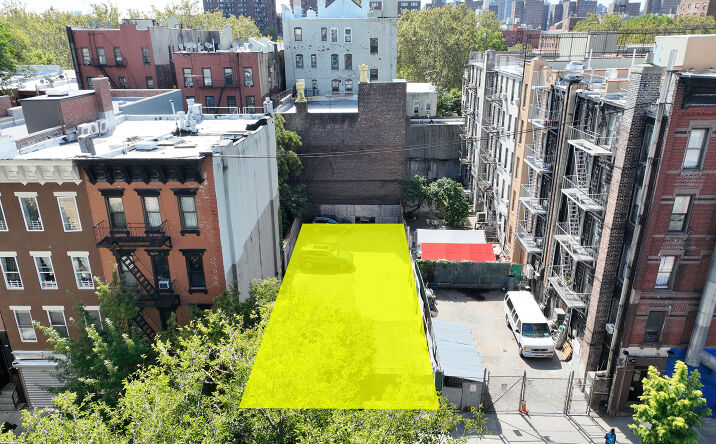As New York Land Buyers further explore the intricacies of urban development, the importance of place-based strategies is becoming increasingly clear. These strategies focus on leveraging the unique characteristics of a neighborhood to guide development. Buyers who immerse themselves in the local culture, history, and community dynamics can create projects that resonate deeply with residents. This approach not only fosters community support but also enhances the marketability of new developments.
The integration of wellness-centered design principles is also gaining traction among land buyers. As public awareness of health and wellness grows, buyers are increasingly designing spaces that promote physical activity, mental well-being, and social connectivity. Features such as fitness centers, walking trails, green roofs, and communal gardens can significantly enhance the appeal of residential and commercial developments. This focus on wellness not only attracts health-conscious residents but also aligns with a broader cultural shift toward prioritizing well-being in urban living.
The rise of “affordable housing trusts” represents a growing trend in how buyers are approaching affordability in their projects. These trusts aim to preserve long-term affordability by removing properties from the speculative market, ensuring that housing remains accessible to lower-income residents. Buyers who engage with or establish such trusts can play a pivotal role in addressing the pressing need for affordable housing, positioning themselves as responsible developers committed to community welfare.
Collaboration with local non-profits and community organizations is another avenue for buyers to enhance their projects’ impact. By partnering with organizations that understand community needs and challenges, buyers can tailor their developments to provide genuine benefits. This might include incorporating community spaces, supporting local businesses, or providing resources for job training and education. Such collaborations can transform a development from a mere property into a catalyst for positive change.
The trend of urban agriculture is also gaining momentum, particularly as communities seek more sustainable living options. Buyers who incorporate community gardens or urban farms into their developments can promote local food production, enhance community ties, and contribute to environmental sustainability. These spaces not only provide fresh produce but also serve as educational platforms, fostering a greater understanding of food systems and environmental stewardship.
In the realm of financing, the emergence of impact investing is reshaping how projects are funded. Impact investors seek to generate social and environmental benefits alongside financial returns, creating opportunities for buyers who prioritize sustainability and social equity. By attracting impact investors, buyers can secure funding for projects that align with their values, ultimately amplifying their positive community impact.
As the conversation around climate justice becomes more prominent, buyers are also recognizing the importance of addressing the disproportionate effects of climate change on marginalized communities. Integrating climate https://www.landboss.net/sell-land-for-cash/new-york resilience into development plans while considering the needs of vulnerable populations is essential. Buyers who prioritize equity in their climate strategies not only help create more resilient communities but also position themselves as leaders in the movement toward a just and sustainable urban future.
The shift toward remote work has prompted buyers to rethink the design and function of office spaces. As companies embrace hybrid work models, the demand for flexible, multi-use office environments is increasing. Buyers who create adaptable workspaces that can be easily reconfigured to accommodate various needs will likely find success in attracting tenants seeking modern, functional environments.
As urban living becomes increasingly competitive, the importance of distinctive branding and marketing strategies cannot be overlooked. Buyers are leveraging storytelling to create narratives around their developments, emphasizing unique selling points such as sustainability, community engagement, and local culture. A compelling story can resonate with potential residents, creating an emotional connection and enhancing the perceived value of a project.
Looking ahead, the influence of global trends on local markets will continue to shape the strategies of New York Land Buyers. As cities worldwide grapple with similar challenges—affordability, sustainability, and resilience—buyers can look to successful models from other urban centers for inspiration. Learning from best practices and innovative solutions implemented in cities around the globe can provide valuable insights and foster a culture of collaboration and knowledge-sharing.
Finally, the role of education and advocacy in land development is becoming more significant. Buyers are increasingly engaging with local governments, policymakers, and advocacy groups to influence zoning laws and development regulations. By being active participants in the policymaking process, buyers can help shape a regulatory environment that supports responsible development while addressing community needs.
In conclusion, New York Land Buyers are operating in a landscape defined by a multitude of evolving factors—community needs, sustainability imperatives, and technological advancements. By embracing a holistic approach that prioritizes wellness, social equity, and environmental responsibility, buyers can create developments that truly serve the community. As they navigate the complexities of urban development, the focus on collaboration, innovation, and community engagement will be essential for shaping a New York that is vibrant, inclusive, and resilient. The future of land buying extends beyond financial considerations; it is about fostering connections, enhancing quality of life, and contributing to a sustainable urban future that benefits everyone.
